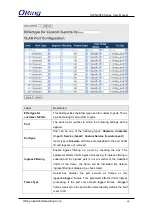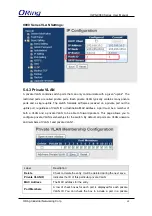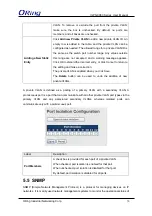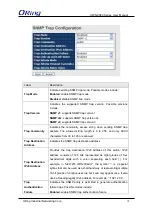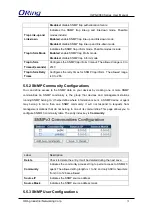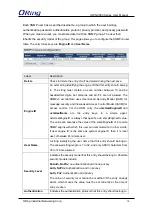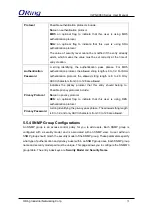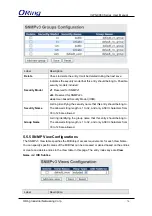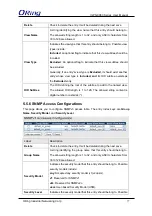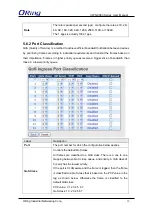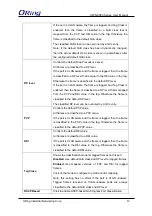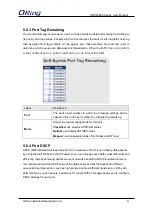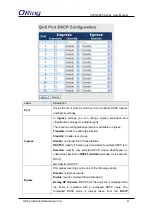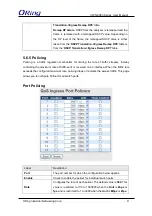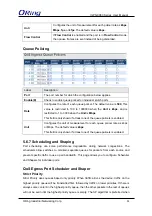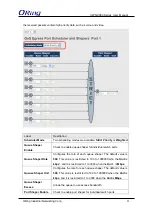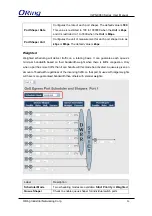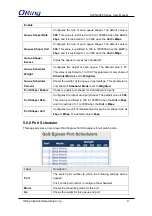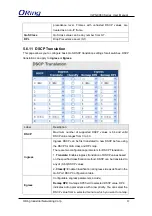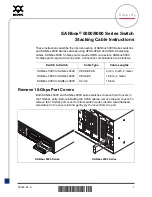
IGPS-9080 Series User Manual
ORing Industrial Networking Corp
74
Each SNMP user has a specified username, a group to which the user belongs,
authentication password, authentication protocol, privacy protocol, and privacy password.
When you create a user, you must associate it with an SNMP group. The user then
inherits the security model of the group. This page allows you to configure the SNMPv3 user
table. The entry index keys are
Engine ID
and
User Name
.
Label
Description
Delete
Check to delete the entry. It will be deleted during the next save.
Engine ID
An octet string identifying the engine ID that this entry should belong
to. The string must contain an even number between 10 and 64
hexadecimal digits, but all-zeros and all-'F's are not allowed. The
SNMPv3 architecture uses User-based Security Model (USM) for
message security and View-based Access Control Model (VACM) for
access control. For the USM entry, the
usmUserEngineID
and
usmUserName
are the entry keys. In a simple agent,
usmUserEngineID is always that agent's own snmpEngineID value.
The value can also take the value of the snmpEngineID of a remote
SNMP engine with which this user can communicate. In other words,
if user engine ID is the same as system engine ID, then it is local
user; otherwise it's remote user.
User Name
A string identifying the user name that this entry should belong to.
The allowed string length is 1 to 32, and only ASCII characters from
33 to 126 are allowed.
Security Level
Indicates the security model that this entry should belong to. Possible
security models include:
NoAuth, NoPriv
: no authentication and none privacy
Auth, NoPriv
: Authentication and no privacy
Auth, Priv
: Authentication and privacy
The value of security level cannot be modified if the entry already
exists, which means the value must be set correctly at the time of
entry creation.
Authentication
Indicates the authentication protocol that this entry should belong to.

